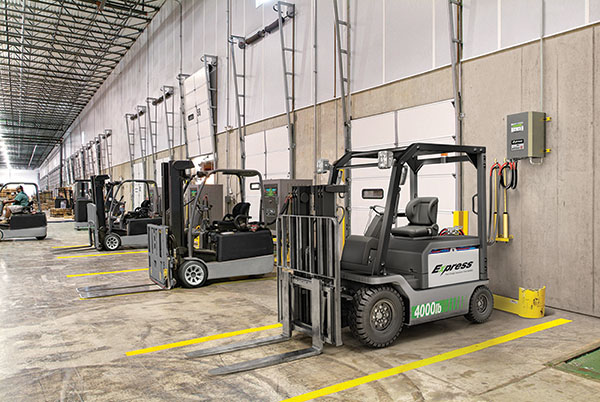For a century or so, the management of lift truck batteries did not inspire much discipline. In the past decade, when battery prices doubled and fleet efficiency came under scrutiny, mismanaged batteries had a clear detrimental effect to uptime and productivity.
It’s possible to get five years out of a conventional lead-acid battery, but improper maintenance significantly shortens its life, says Harold Vanasse, senior director of motive power marketing for the Americas at EnerSys.
“It’s a struggle for battery users, and they don’t want to do it. It has now bubbled up to the higher side of the priority list,” Vanasse says. “You can quantify the cost of a watering system, how long it takes to change and maintain. You can apply some standard labor rate, but how well or how poorly you perform each step, how heavy or light the application, can affect that calculus. More often than not, people are not getting what they want or expect out of a battery.”
Fuel cell, lithium-ion and thin plate pure lead (TPPL) alternatives to conventional lead-acid can virtually eliminate maintenance concerns. Some have reworked their approach to lead-acid with opportunity charging, and some have been able to remove battery changing rooms. Still, Vanasse estimates at least half—and probably most—battery users should examine their methods.
“Like any technology adoption, you will have those who must have the newest, and some folks are happy with the old, but the vast majority needs to look at what they’re doing and question those costs,” Vanasse says. “We will see a migration away from battery rooms. Technology will be there to get good power delivery through the day when you put the right lift truck in the right application with the right power source and charger.”
Avoiding the changing, watering and equalizing of batteries is an attractive benefit, but broader strategic advantages also help. Vanasse says the prospect of buying one battery that will last for the life of a leased lift truck is a compelling opportunity to add some much-needed peace of mind to battery management.
“Lithium-ion is a more expensive option, but you avoid all the maintenance and know that one truck, one battery and one charger will last for five years,” he says. “Some technologies we’re betting on include TPPL and lithium-ion. Both, in our minds, will offer a similar maintenance-free experience. We take a chemistry-agnostic approach: Put the battery in the truck and don’t worry about it.”
Because different applications require different power sources, Vanasse predicts more hybrid models, where one facility uses TPPL for light- and medium-duty applications and lithium-ion for heavy-duty work. He also predicts wireless charging is not far away, which further error-proofs opportunity charging setups that are highly dependent on the operator plugging in consistently.
“None of this happens overnight. Maybe there’s a gradual migration as old equipment cycles out, or you make changes during the move to a new building or after building changes,” Vanasse says. “It’s a transformative time and it’s exciting, coming from a period of time close to a century of a great product that worked well, but now it’s changing more than ever before in this industry.”
Article topics








